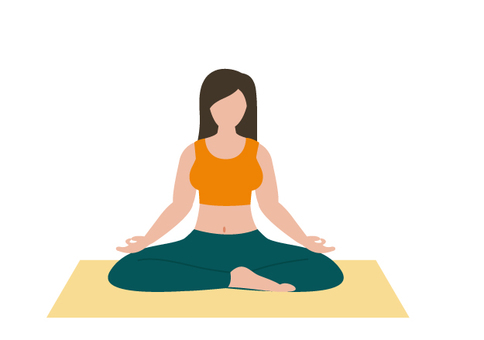The practice of being present in the moment and observing one’s thoughts, feelings, and surroundings without judging is known as mindfulness. It is a state of open, active focus on the present. Although mindfulness can be incorporated into everyday activities, it is frequently associated with meditation. Practicing mindfulness and meditation can also assist individuals in developing greater self-awareness and emotional understanding and control.
Different mindfulness meditation for beginners to practice
Best Mindfulness meditation deep breathing and visualization exercises are two other practices that can assist individuals in developing stress-management strategies.
Mindful breathing:
The practice of paying attention to your breath as you breathe is known as mindful breathing. You can calm your mind and return to the present moment by focusing on your breath. This practice of mindfulness meditation for anxiety can assist you in reducing stress, reducing feelings of depression and anxiety, and improving your overall well-being. To practice mindful breathing, find a quiet spot where you can lie down or sit comfortably. While taking a deep breath through your nose, count to four. After inhaling deeply and holding it for a few counts, slowly exhale through your mouth. It should be done several times.
Mindful movement:
The practice of paying attention to your body as you move is called mindful movement. Yoga, tai chi, or even just walking are all examples of this. You can bring yourself into the present moment and improve your overall well-being by focusing on the sensation of your body moving.
Yoga and tai chi are especially good for people who want to feel better and reduce stress. Yoga, a form of physical, mental, and spiritual exercise, originated in ancient India. It involves meditation, various physical postures, and breathing. Also known as “meditation in motion,” tai chi”.
Mindful eating
You can improve your relationship with food and your overall well-being by focusing on the experience of eating. Sit down at a table with your food and focus on the experience of eating to practice mindful eating. Slowly chew your food and savor each bite. Food that smells and tastes good should fill your mouth. Take note of how you feel in your body as you eat and how your hunger levels change. When eating, avoid using a computer or television as a distraction.
Mindful listening
The practice of listening to sounds without judging or getting distracted is called mindful listening. It can help reduce stress and improve communication. To practice attentive listening, locate a quiet spot to sit or lie down. Focus on the sounds in the area while you close your eyes. Try to pay attention to the various sounds and any thoughts or feelings that may arise without judging them.
Conclusion
You can cultivate a sense of calm, focus, and balance in your daily life by practicing mindful breathing, movement, eating, listening, and observation. The key is to incorporate mindfulness into your daily life on a regular basis, whether you choose to engage in qigong, yoga, tai chi, or other forms of movement. Keep in mind that it is acceptable to begin small and increase gradually; the objective is to establish a habit that can last.









































